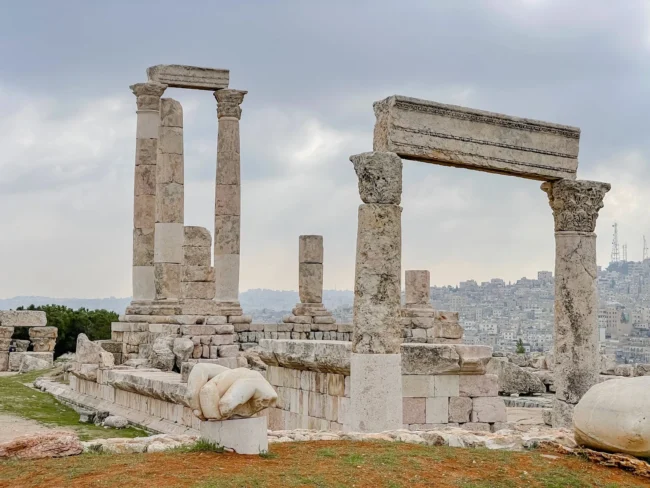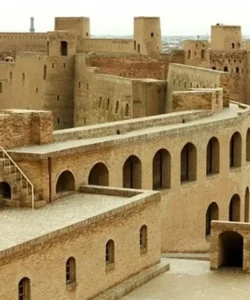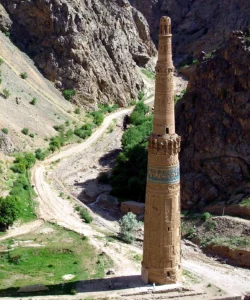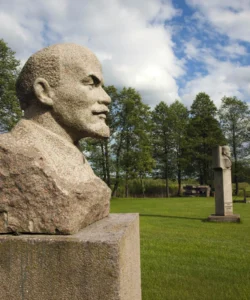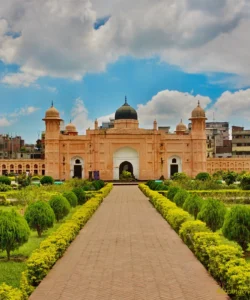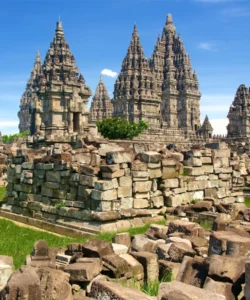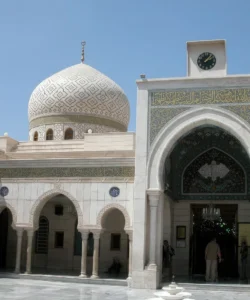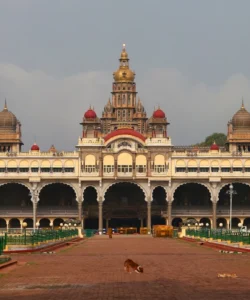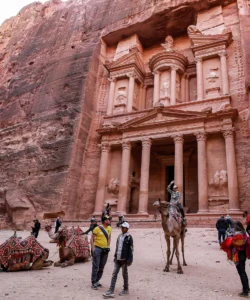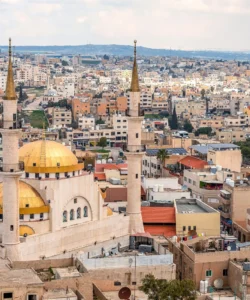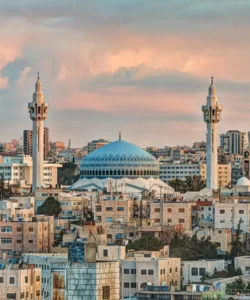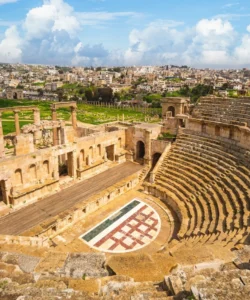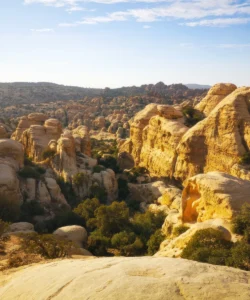The Amman Citadel, known locally as Jabal al-Qal’a, is a historic archaeological site located on a hill in the heart of Jordan’s capital city, Amman. It is one of the world’s oldest continuously inhabited places and features a wealth of ruins from multiple ancient civilizations, offering a panoramic view of the city below.
Listen to an introduction about Amman Citadel
Name and Address
- Name: Amman Citadel (Arabic: جبل القلعة, Jabal al-Qal’a)
- Address: The Citadel is located on the hill of Jabal al-Qal’a, a prominent landmark in downtown Amman, Jordan. Its elevated position, approximately 850 meters above sea level, provides it with a commanding view of the city.
How to Get There
The Citadel is a short distance from the city center and is easily accessible.
- By Taxi/Ride-Sharing: This is the most convenient way to get to the top of the hill. Taxis are plentiful in Amman and can take you directly to the entrance. You can also use ride-sharing services.
- On Foot: You can walk up the steep path from the downtown area, often starting from the Roman Theatre, which is located at the foot of the Citadel hill. This allows you to explore the city’s old downtown area, known as Al-Balad, on your way.
- By Car: The site is accessible by car, and there is a parking lot adjacent to the entrance.
Landscape and Architecture
The Citadel is a sprawling, open-air museum with a landscape defined by the ruins of several powerful empires that once occupied the site.
- Layered History: The site features remains from the Roman, Byzantine, and Umayyad periods, among others.
- Key Structures:
- Temple of Hercules: This is one of the most significant Roman structures on the site, dating back to the 2nd century CE. Only a few towering columns and the monumental hand of a colossal statue remain, but they give a sense of its former grandeur.
- Umayyad Palace: Dating from the 8th century CE, this is the best-preserved structure on the Citadel. The complex includes a monumental gateway and a grand domed audience hall, which has been partially reconstructed.
- Byzantine Church: The ruins of a 6th-century Byzantine church can be seen near the Umayyad Palace. It features a basilica-like layout and repurposed Corinthian capitals from the Roman era.
- Panoramic Views: The Citadel’s location on the highest hill in Amman provides a stunning 360-degree perspective of the city, including a clear view of the Roman Theatre below.
What Makes It Famous
The Amman Citadel is famous for its rich, multi-layered history and its striking physical presence.
- Continuously Inhabited Site: Archaeological evidence shows that the hill has been inhabited for thousands of years, making it one of the world’s oldest continuously settled places.
- Meeting of Civilizations: The ruins from the Roman, Byzantine, and Umayyad periods on a single site demonstrate the historical transitions of the region and the influence of different cultures and empires.
- The Temple of Hercules: The ruins of the Temple of Hercules, particularly the massive stone hand, are an iconic image and a testament to the colossal scale of Roman architecture.
- Panoramic Views: The breathtaking views of modern Amman from atop the Citadel are a major draw for visitors, offering a unique perspective of the old city and the new.
- Archaeological Significance: The site continues to be a rich source of archaeological discoveries, with ongoing excavations revealing new insights into the city’s history.
Differences from Some Other Wonders (e.g., The Roman Forum)
While both the Amman Citadel and the Roman Forum are ancient urban centers with Roman ruins, they differ in several ways.
- Multi-period vs. Singular Focus: The Amman Citadel showcases a broad range of historical periods, from the Bronze Age through the Umayyad era. The Roman Forum, while having layers of history, is predominantly known as the heart of ancient Rome and is overwhelmingly defined by its Roman-era structures.
- Geographical Setting: The Amman Citadel’s location on a high hill provided it with a defensive and strategic advantage, and its ruins are scattered over a large, natural landscape. The Roman Forum is situated in a low-lying valley between hills and was the bustling center of a city.
- Preservation: The Amman Citadel has well-preserved structures from later periods (like the Umayyad Palace) alongside its Roman ruins. Much of the Roman Forum’s structures were dismantled or buried, and its preservation is more focused on the Roman period itself.
Amman Citadel Photos:
